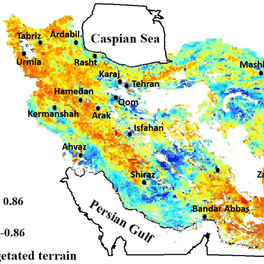Climate and Weather in Iran
 Climate and Weather in Iran
Climate and Weather in IranIran’s climate is highly diverse due to its large size and varied geographical features. The majority of Iran experiences a desert climate, with high temperatures during the summer months. In cities like Tehran, summer temperatures can rise to 40°C. Therefore, if you plan to travel to Iran in the summer, be prepared for hot weather. While temperatures at night may not be as high as during the day, they can still be quite warm.
The mountainous regions in the northern part of Iran have a colder climate. Winters in these areas are characterized by heavy snowfall, making it a popular destination for winter sports enthusiasts. The Alborz Mountains surrounding Tehran are especially well-known for hiking and skiing. The northern region of Iran has a subtropical climate, which offers milder temperatures.
Winter in Iran can be very cold, especially in the mountainous regions. In cities like Tabriz, located in the northeast, snow is common during the winter months, and temperatures can drop below freezing. If you plan to travel to Iran’s mountainous regions in winter, be sure to pack warm clothing and prepare for possible snow conditions.
Climate variations in Iran have significant impacts on agriculture and natural resources. In the southern regions, summer heat can severely affect daily life. In cities like Ahvaz and Bushehr, temperatures can exceed 50°C during the summer, leading to challenges with water resources and agriculture.
The best times to visit Iran are generally during the spring and autumn months when the weather is mild and comfortable for travel. The eastern part of Iran experiences a hot desert climate, so it’s better to visit these regions during months other than the summer.
Other Contents

